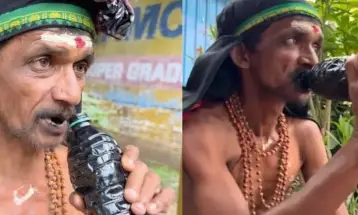The Sambisari Temple, One of Hidden Temples Underneath Mount Merapi Ash

Holiday Ayo - Yogyakarta is known for its many ancient buildings, monuments, and temples, and one of them is Candi Sambisari, a Hindu temple that was constructed in the 9th Century.
Candi Sambisari is located in the village of Purwomartani near the Adisucipto International Airport about 9 km east of downtown Yogyakarta. Yogyakarta is the capital of Yogyakarta province, located south of Central Java.
Sambisari was accidentally unearthed by a farmer in July 1966. While working on the land, his hoe hit a carved stone that was part of the buried temple. News spread fast and soon enough Indonesia’s Office of Archaeology in Prambanan secured the area and began excavation.

The temple was buried deep in volcanic ash believed to be from an eruption of the nearby Mount Merapi. Sambisari finally saw the light of day once again in March 1987. It was an exciting moment, and city officials wonder if there are other hidden temples underneath Mount Merapi ash yet to be discovered.
Sambisari is architecturally similar to the more popular Prambanan Temple. Experts and historians believe that Sambisari was a Shivaite Hindu temple based on the ornaments and statues on its walls, as well as the lingam and yoni images in the main temple. They believe that it was built around the years 812-846 during Rakai Garung’s reign. This period was easy to arrive at with the discovery of a gold plate within the temple’s vicinity. Engraved on it were letters that were typically used in the early 9th Century in ancient Java.
Although much smaller than Borobudur and Prambanan, Sambisari is a sight to behold. Tourists come here to be amazed by ancient Javanese architecture.

Visitors climb down a flight of stairs to reach the temple’s central area, which is about 7 meters lower than the ash-covered ground. Much of the temple is still buried underneath. The rectangular central area is a 3-meter wide gallery with surrounding balustrades and 12 stone bases. It is believed that these round and square bases were used to support wooden pillars and a roof structure that collapsed from the volcanic ashes. Based on the ruins, it is now believed that Sambisari was a temple complex that had the main temple and three smaller guardian (“pervara”) temples in front. The main temple is square-shaped and faces west.
On its walls are several statues of Hindu gods, Durga, Ganesha, and Agastya, all adorned with Kala’s head on top. There are also statues of Mahakala and Nandisvara, as well as the Naga serpent.
Candi Sambisari is just a tiny temple but western tourists who have not been near an authentic ancient temple are in for a real treat. Ancient carvings, niches, and statues always bring about an air of mysticism that breeds curiosity about how the people of bygone centuries used to live. It is also a puzzle how such structures were constructed without the aid of modern tools and technology.








Leave a comment